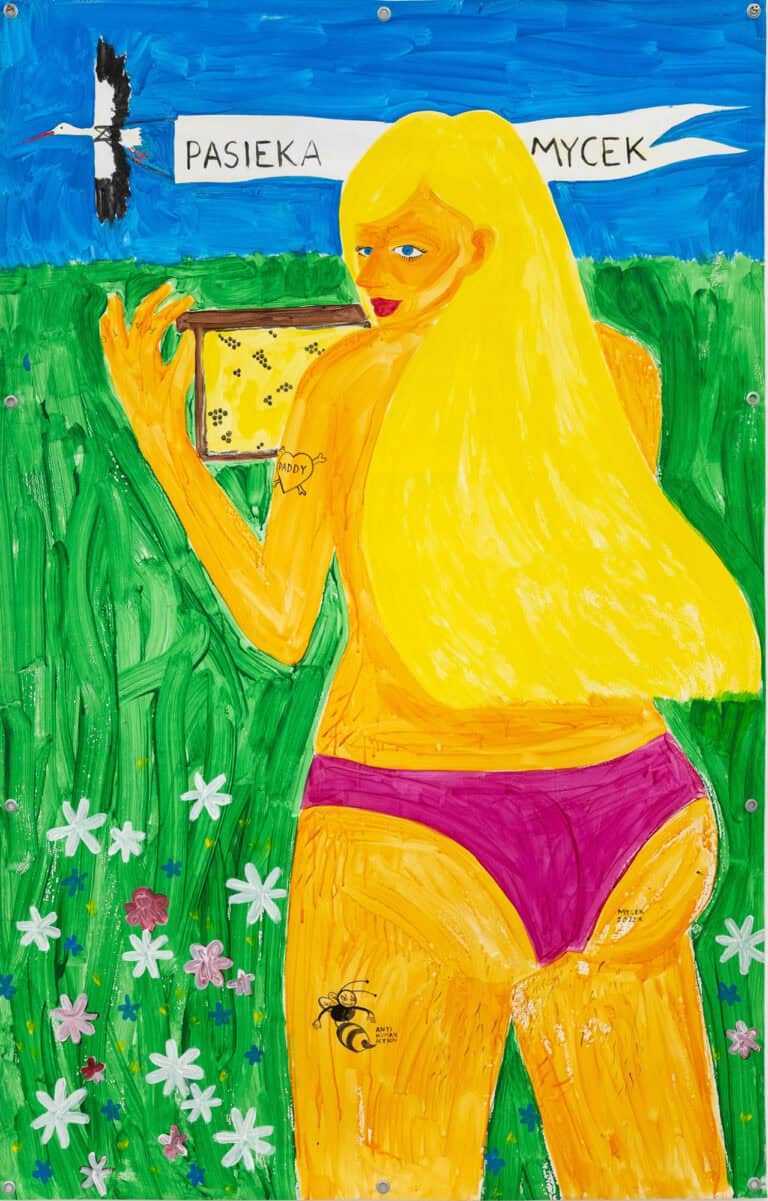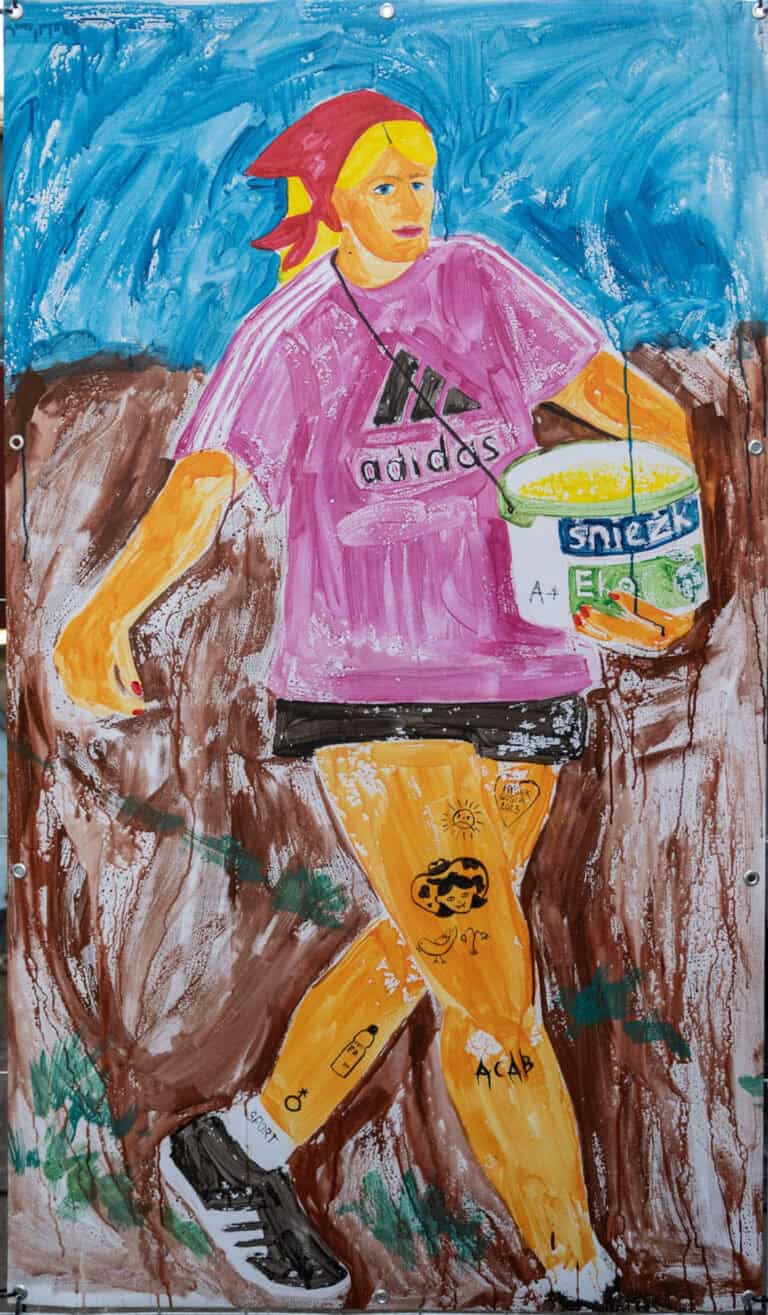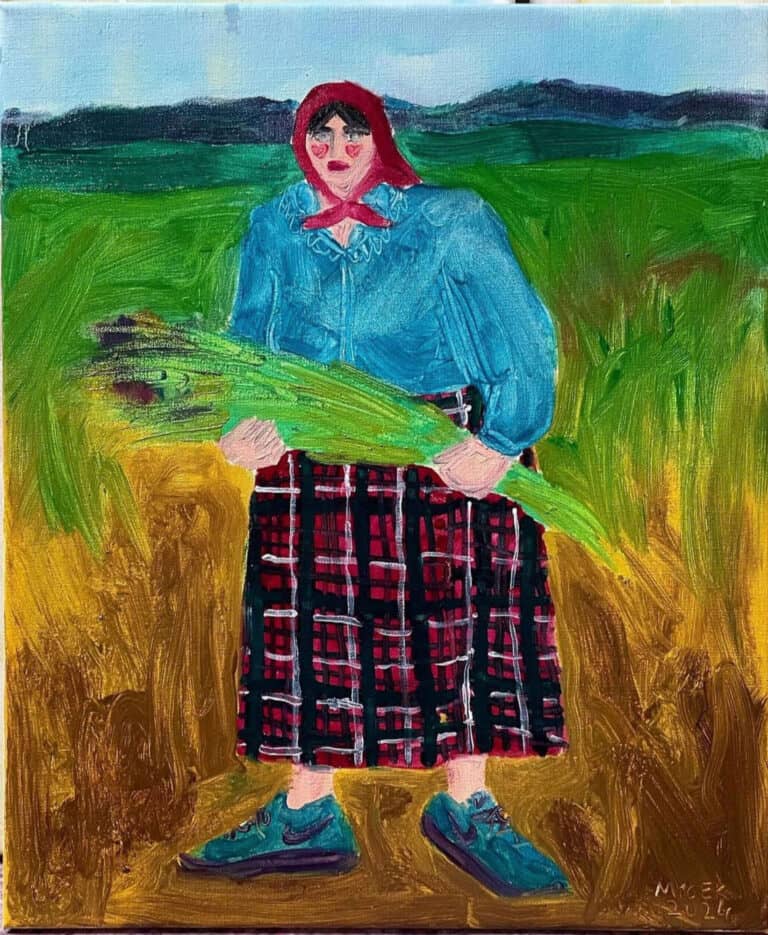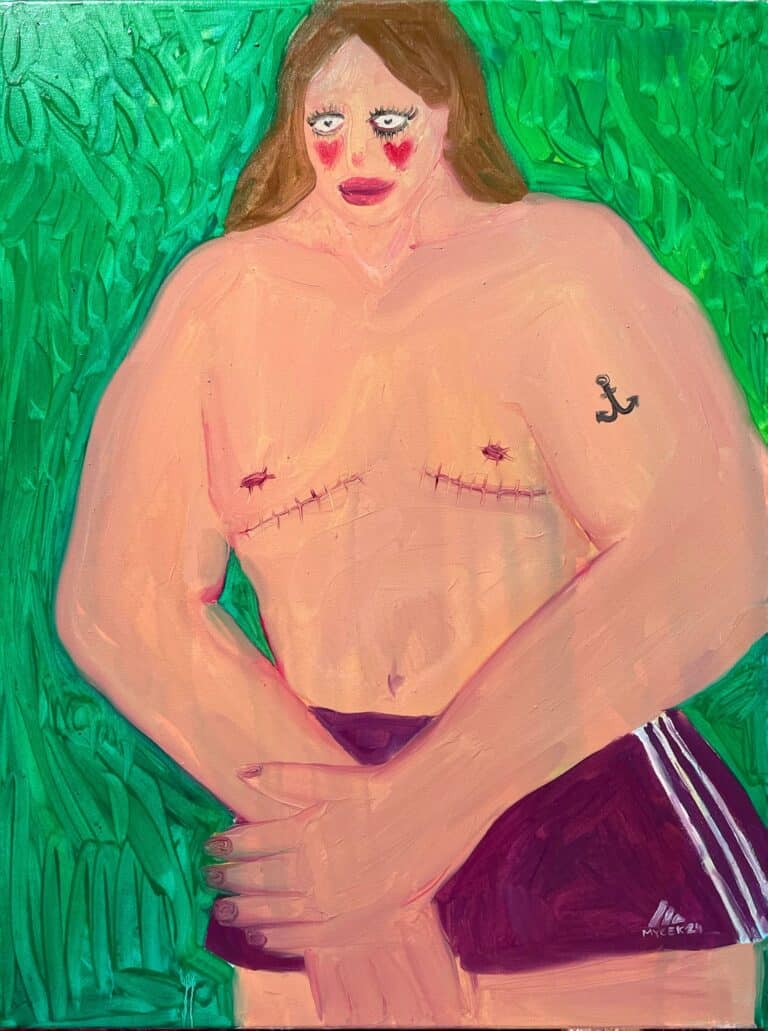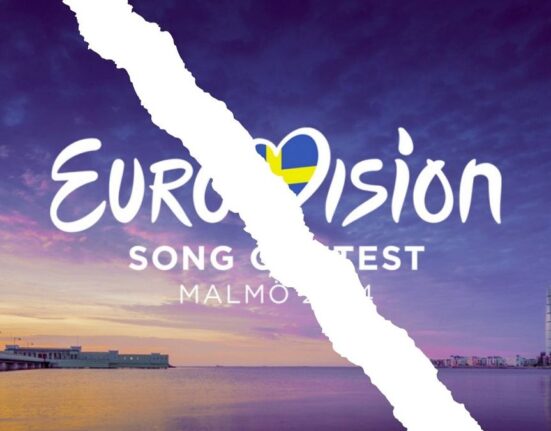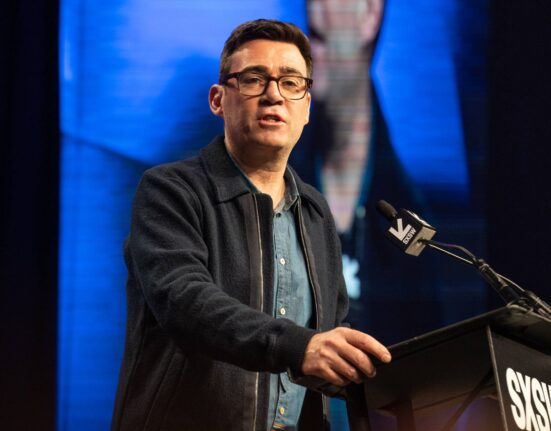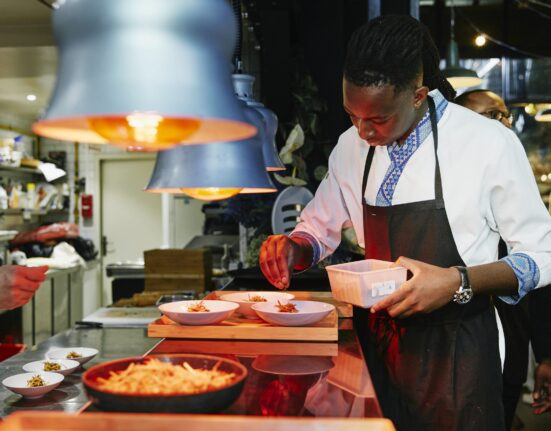In her illuminating book Archive of Feelings (2003), feminist and queer scholar Ann Cvetkovich observes how: “The act of archiving personal and collective memories can serve as a form of activism, a way to resist erasure and claim visibility for marginalized experiences.” 20 years on from the publication of this seminal work in the field of queer and feminist theory, across Central and Eastern Europe, LGBTQAI+ people continue to fight for equality and visibility against an unrelenting tide of right-wing hate speech and politics. One of the most notable recent cases is the ultra-conservative Polish government’s introduction of ‘gay-free zones’ in 2021, which has tarnished 1/3 of the country with xenophobic and fascist rhetoric, and reinforces the dangerous interpellation of not identifying heterosexual as ‘abnormal’. Considering that annual suicide rates for Polish LGBTQAI+ people have risen by 16% since the bill’s introduction, the fight for equality for sexual minorities, and changing homophobic legislation and public opinion continues. To coincide with the month of Pride, here are 8 LGBTQAI+ contemporary artists from Central and Eastern Europe who bring visibility to the community, contributing to an ever-growing archive of queer experience:
What do nettles, common weeds and unwanted plants have to do with the collective human experience? What can we learn from the anomalies and defects of herbs and trees? For artist Liliana Zeic (b. 1988, Poland), the infections, viruses and bacteria of the natural world are wonderful mentors that we live with rather than fight against.
In the artist’s recent forays into intarsia wood, female bodies emerge amongst the swirling cosmos and nebula of poplar, maple and walnut browns, recalling Cezanne’s bathers, or Gustav Klimt’s sensual charcoal reclining nudes. Yet here, the female figure is invested with agency, the frontwoman of the tableaus, reimagined for a queer audience. We spot women picking berries in the forest (Berry picking), or indulging in everyday habitual states, as laying lovers in bed (Sleepyheads). Zeic’s interdisciplinary arts practice involves video, photography and performance works to explore social issues and activism from a queer and feminist perspective. These recent intarsia works however, are the result of a more personal investigation, a form of manual self-expression, which combines Zeic’s rural upbringing in the Polish countryside with her family lineage – her parents owned a carpentry workshop themselves.
Essential to each work are the blotchy characteristics of this natural canvas, known as burr – fungi which have grown in a deformed manner on a tree trunk or branch. Zeic reclaims these organic deformities as her primary material to carve a new world for individuals on the margins of society. Turning to plants, botany and flora, she queers the school of biomorphism – the tradition of modelling society based on processes and forms in the natural world, repurposing what nature has discarded as ill, and man has colonised as purely decorative (intarsia is commonly used in furniture).
In fact, these millennia-old life forms can teach us about resistance, survival strategies and mechanisms for navigating a world hell-bent on categorisation, cataloguing, upholding binary models and systems of power. Like the often trodden-on, discarded, or forgotten about weeds, overgrowths and bulbous tree protrusions, Zeic’s intarsia series enable new possibilities of living while on the margins of society.
The rural imaginary gushes through Małgorzata Mycek’s (b. Sanok, 1993) buoyant and explosive paintings of strong and defiant burly women in quotidian countryside backdrops. The trans artist, who settled in their native village of Radoszyce in the Bieszczady region of Poland, peppers their works with countless references to village life. Playful titles, such as Chodzienie spać z kurami (Going to sleep with the chickens, 2022), Kosiarz (Mower, 2024), Żniwiarka (Reaper, 2023) or Kopienie siana (Digging hay, 2022), nod to the simple pleasures and slow pace of country life. Scythes, apiaries and haystacks coalesce with pin-up girl tattoos, hairy bottoms and consumer references of Nike ticks, weaving a hybrid identity of being a queer millennial living in Polish countryside. Mycek’s acrylic paintings on repurposed advertising banners undoubtedly possess a hopeful, optimistic charm, and utopian flavour of queer country life, boosted by their chosen palate of marigolds, vermilions, chartreuses and shamrocks. Yet their paintings and wider artistic practice evokes far deeper messages of fighting for gender emancipation, the struggle for queer rights, and importance of supporting local causes and grassroots initiatives.
The artist recently collaborated with Polish and Belarussian artists Alexey Lunev, Raman Tratsiuk and Katarzyna Wojtczak to produce the very first public LGBTQAI+ monument in Poland, Deus Pluto conservat (2024). Their signature motif – a femme farmer woman holding a sickle – is seen alongside Raman Trarusiuk’s two-headed sickles bobbing in space and Aleksey Lunev’s Latin motto. Pluto, which was downgraded by the International Astronomical Union in 2006 to become a dwarf planet, is reclaimed here as a symbol of queer resistance. An outcast of outer space itself, the former planet is an example of life on the periphery. The mural, entirely crafted from mosaic, reclaims a material widely used for perpetuating the Soviet propaganda machine and repurposes it for the LGBTQAI+ community. Following the writings of queer theorist and Brown feminist scholar Sara Ahmed, the collaborative cross-cultural project embodies the message that “We have to build our own buildings when the world doesn’t accommodate us.” (Feminist Killjoy).
Soft and strong, tender and resilient, the faces which Zula Rabikowska (b. Poland) captures in front of her lens reflect the diverse and often contradictory experiences of migration, gender identity and belonging. The London-based artist’s photojournalism is inspired by her own story of migration and coming out as LGBTQAI+. Her works grapple with the lived day-to-day realities of the community, offering an antidote to mainstream representations which reduce human experience to fanciful queer parties, Pride parades, or the extreme – pathologizing rhetoric and rejection stories. In her ongoing project, Scared to Love (2022 –) Rabikowska photographs LGBTQAI+ people across the Balkans, a region of Europe that continues to record some of the worst violations of LGBTQAI+ human rights and discrimination.
She incorporates analogue photography techniques, using a Kiev 80 camera in her 2019 acclaimed project Nothing But A Curtain, which produced a dazzling optical illusion, a ‘wall of light’ across the lens, and evoked the era of Soviet production. Combined with her interest in storytelling, Rabikowska constructs her own idiosyncratic visual language and challenges the stereotypes associated with the former Soviet Bloc nations. Her projects offer an earnest portrayal of the community, and contribute to weaving a queer archive of love, affect and belonging.
Alex Baczyński-Jenkins (b. 1987, Poland) is an artist and choreographer, and founder of the Warsaw-based queer feminist collective Kem, and dividing his time between Berlin and Warsaw. He explores affect, embodiment and relationality through durational performances and movement works. Baczyński-Jenkins’s performances, such as Until a thousand roses bloom (2018), seen at Foksal Gallery in Warsaw, challenge the social and cultural parameters which have been constructed to privilege the white, cis, able-bodied man. He draws on common LGBTQAI+ signs, codes and sexual practices, such as cruising, often carried out by gay men, incorporating them into his routines and using mixed-gender performers, thus creating new interrelations and being-in-the-world.
As bodies thrive, cavort and contort in his heady, visceral compositions, Baczyński-Jenkins demonstrates how archives are also constructed through the politics of touch. Time, another key factor in his works, is exploited for its elastic properties. It ruptures the somatic norm of heteronormativity, like the physiological networks formed through the touching of the dancers’ bodies. Baczyński-Jenkins’ dances reveal how a queer archive is resolutely affective and sensational, as stated by the queer theorist Eve Kosovsky Sedgewick in her seminal work, Touching-Feeling (2005), “touch can enable ‘tools and techniques for nondualistic thought”.
We swim through the supernatural waters of florescent divinities, cyborg aliens, and mythological warriors in Hortensia Mi Kafchin’s (b. 1986, Galați, Romania) giant oil on canvas worlds. The binaries of heaven and earth, land and cosmos, the digital and natural bleed and collapse in on each other, resulting in volatile and chaotic scenes, expressions of the abject. As feminist philosopher Julia Kristeva argues in Powers of Horror: An Essay on Abjection (1982), the abject is a form of expulsion and rejection of the ‘Other’ – a body threatening to disrupt the ontological and hegemonic order of society. In Mi Kafchin’s paintings, sense and logic is destitute as the human body appears spliced and severed (Social Anxiety, 2019), or mutates into half-machine (The Fireworks, 2020), nodding to Mi Kafchin’s personal experience of transitioning gender. Her works reveal the power in the mutating body, the merging of man-machine, and the queer potentiality of new forms of being.
The Berlin-based artist’s troubles the tug-and-pull of the Cartesian dualism exquisitely: nature and artifice, man and religion, ying and yang swim in an array of psychedelic pools of neon, brilliant arches and Renaissance geometric naves. We are reminded of Hilma af-Klimt’s esoteric dreamworlds, but here they are injected with contemporary anxieties of technology, social media and AI. Countless cables, TV monitors, and video game paraphernalia littering her works merge with personal identity markers, to construct a unique archive of growing up as LGBTQAI+ in a post-Ceaușescu-dictatorship Romania. Chaotic, disturbed but also explosive and energetic, Mi Kafchin’s paintings reveal the boundless potential of being, of hybridity, pluralities beyond the ontological social order, the beauty in the abject.
One of the first openly-queer Polish artists emerging on the arts scene at the start of the noughties, Karol Radziszewski (b. 1980, Białystok, Poland) paved the way for a Central and Eastern European queer counterculture against the far-right government gaining traction at the time. An interdisciplinary artist, curator, film-maker and avid collector, community activism and forging an ongoing circuit of queer alliance are central themes in his projects. In 2015, the artist launched the online Queer Archives Institute – a Polish queer cultural organisation committed to promoting and upholding the queer memory of Central and Eastern Europe. Unlike some of the younger artists featured in this article, Radziszewski witnessed the fall of communism, already nine years old living in the city of Białystok in 1989. Remnants of his childhood filter through in his works, uniting the personal with the collective memory. The Power of Secrets (May 2021: Sternberg Press), is a mammoth tome comprised of archival materials sought by Radziszewski – newspaper scraps and childhood scrawls in scrapbooks of princesses in specs – together with documentation from personal and collective memory. The result is a mutating, hybrid and affective archive, blurring the lines between reality and fiction, and which offers alternative paths for remembering, digressions from the straight line.
In the contemporary late capitalist climate of state-controlled media, profit-driven and surveillant internet, and social media deep fakes, Maja Čule’s (b. 1984, Rijeka, Croatia) interdisciplinary project Electronic Witches (2023) reveals how sites of resistance and hope can flourish even under the most oppressive systems of war, capitalism, and patriarchy. Currently on show at the Croatian Pavilion at the Venice Biennale 2024, after its display at Arcadia Missa gallery in London in 2023, Electronic Witches is a multi-channel video installation and collage project, which centres around the story of two US and UK internet activists and hackers who moved to the Balkans in the 1990s to teach women how to use Bulletin Board System (BBS) networks to send emails.
During the Yugoslav wars, cross-border communication was interrupted by military state leaders, and women were rendered as helpless victims of the war without agency by mainstream news outlets. As a queer artist of Central European heritage, Čule offers a queer retelling of this remarkable case by combining archival footage from Croatian Radio Television along with their reconstruction of historical events. The artist chose a cast of predominantly queer, first-time actors to re-enact the events, thus defying stereotypes of gender and the labour market, and re-investing agency in the hands of women and marginalised groups. Like many of their works, Electronic Witches combines speculative fiction with reality, resulting in audiences questioning authenticity in an age dominated by social media and consumer culture. Čuje’s project is also an example of queer solidarity and of the dangers of staying indifferent, as the ZaMirNET training manual developed the hackers, could ‘bring[ing] to light the ways that silence can be violent.”, as one of the hackers, Kathryn Turnipseed, herself wrote in 1996. Electronic Witches reveals the contentious, fluid and shifting Central and Eastern European cultural identity through the lens of cyberfeminism and queer politics.
Bodies frolic, limbs knock and bump together, shadow play in the chiaroscuro of the pounding dancefloor. These are the snap-shot instances of queer love, unity and celebration captured by LGBTQAI+ artist and photographer Libuše Jarcovjáková (b. 1952, Prague) in her project T Club (Untitled publishing, 2024). Her recent publication documents the ins and outs of the legendary Prague LGBTQAI+ club taken between 1983-85, a hedonistic enclave for marginalised sexualities living during the totalitarianist regime of former Czechoslovakia.
According to Jarcovjáková, this was a place of ‘eternal carnival’, where local taxi drivers and drugstore shop assistants descended into the comforting cloak of cigarette-vapours and strobe lighting flashes. Like the outcasts and misfits gracing Diane Arbus’ photographs of 1960s fringe New York, or Nan Goldin’s intimate and bruising portraits of LGBTQAI+ subcultures, Jarcovjáková’s photographs are unequivocally visceral and living. Charged with emotion, they reveal the beauty and power of queer alliance and community in the face of authoritarian regime and censorship. As the late queer photographer David Wojnarowicz stated, ‘Hell is a place on earth. Heaven is a place in our head.’


